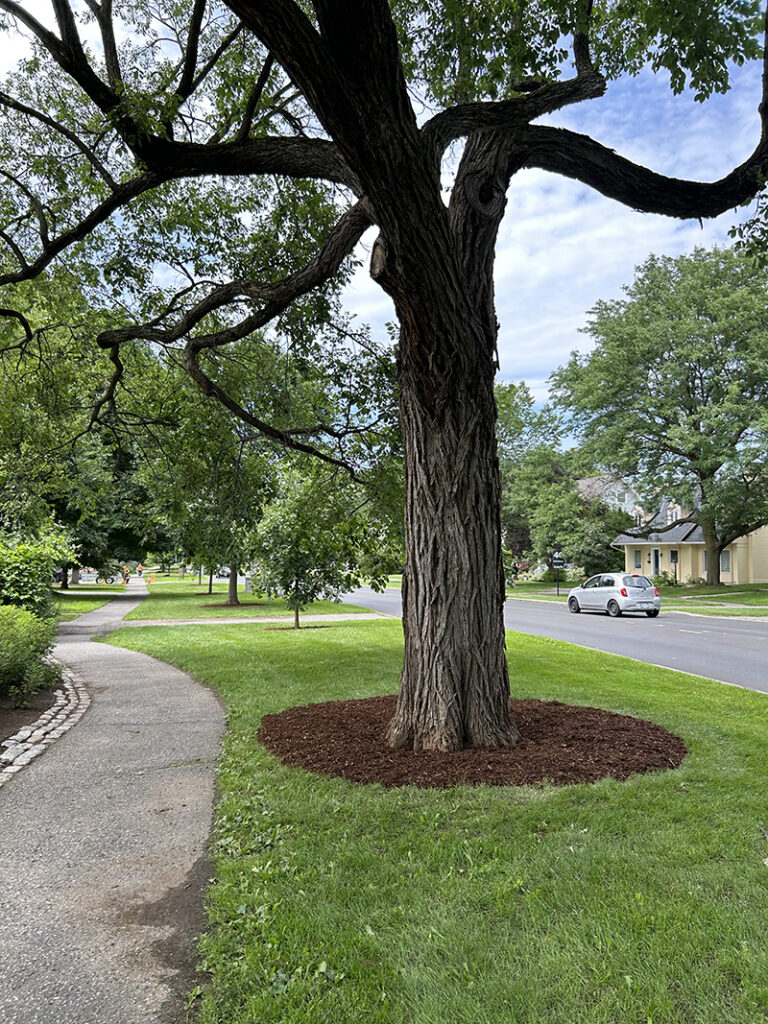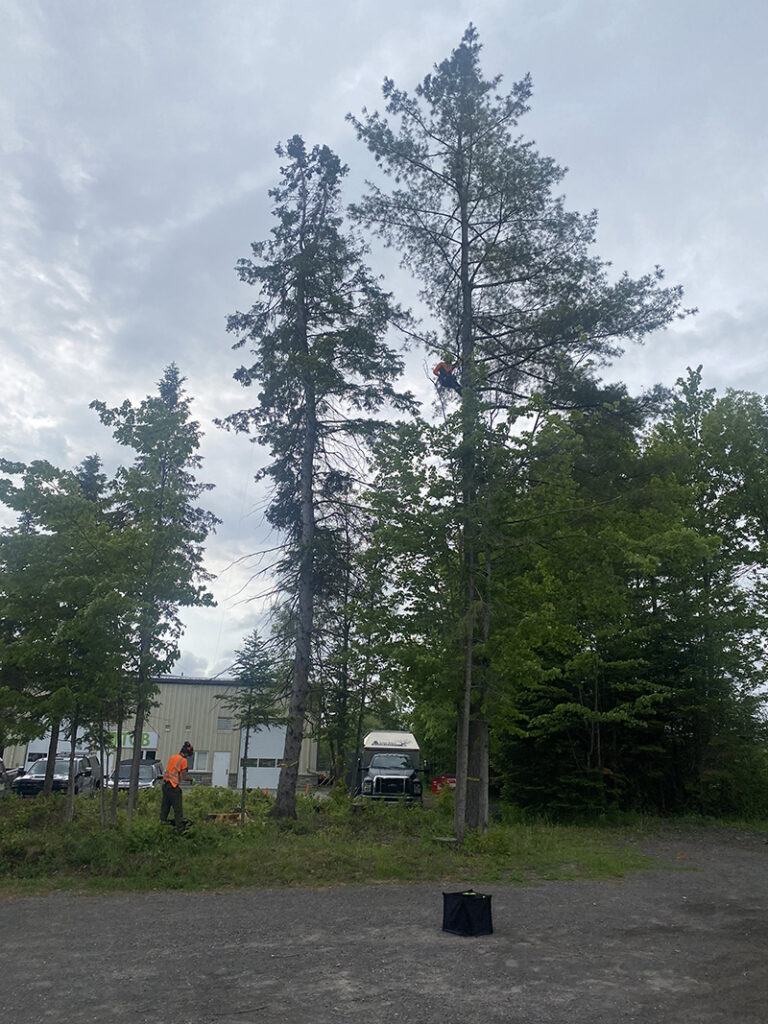In Ottawa, Ontario, trees thrive effortlessly in its scenic parks and the community’s outskirts. When you start caring for trees in your property, however, you realize that keeping them healthy is not as simple as admiring them from afar.
The first lesson for most homeowners is that trees also need maintenance to flourish. Pruning, for one, is not as simple as snipping branches that look “off”. Professional arborists know that each cut can make or break your prized trees.
At Eastern Ontario Arborists, effective tree care begins with educating tree owners. This is why we’ve put together this comprehensive guide to tree pruning: to help you get started in raising strong and healthy trees on your property.
What is Tree Pruning?
Tree pruning is a vital tree maintenance practice that involves removing select branches to promote the tree’s good health, sound structure, and safety.
Pruning and trimming are often used interchangeably, but the former actually requires more expertise when it comes to tree health.
Trimming is designed to enhance the natural shape and appearance of your tree, focusing on visual appeal and the management of overgrown limbs.
Then there’s pruning, which targets unnecessary, dead, and diseased branches.
This approach is often health-centric, offering numerous benefits, such as preventing pest infestations, improving airflow and sunlight penetration, and ensuring that branches do not compete for nutrition, which can compromise structural integrity.
For certified arborists, pruning is primarily supporting the healthy growth of your tree, while also enhancing its overall beauty.

Benefits of Tree Pruning
The benefits of pruning your trees is numerous:
- Better tree health: Pruning prevents the further spread of pests and diseases while promoting healthy growth.
- Stronger structure: Weak and overlapping branches can pose a safety risk and compromise tree health.
- Safety: Pruning removes hazardous branches that can damage nearby structures, come into contact with power lines, or obstruct road signs.
- Better fruits and flowers: Pruning fruit-bearing and flowering trees improves the yield in both quantity and quality.
- Comfort and convenience: Pruned trees improve sunlight penetration, reduce storm damage risks, and open up space in your garden.
- Insurance claims: Claiming insurance for tree-related property damage usually requires proof that the tree is not neglected.
- Visual appeal: A well-pruned and healthy tree also enhances your home’s aesthetic appeal.
- Property value: Excellent curb appeal can help raise the value of both residential and commercial properties if you’re looking to sell or get an appraisal.
Signs You Need to Prune Your Tree
Pruning is done every few years, but there are also signs that your tree might need immediate attention:
Damage & Disease
Signs of damage, pests, or rot should be addressed immediately.
More than a safety risk, damage and disease could also chip away at your tree’s health and can ultimately lead to its death.
Safety Hazards
A tree can pose various hazards.
Weak and dead branches can fall on property or people, while overgrown branches that are getting too close to your home can cause damage or tug at utility lines.
Storm damage should also be considered.
As preparation, remove any dangerous branches or consider reducing the canopy density to reduce wind resistance.
When the storm has passed, inspect for potential hazards or consider calling an expert for a comprehensive tree risk assessment.
Canopy Concerns
Pruning and trimming can also benefit your environment in different ways.
Is your tree preventing sunlight from reaching your home?
Blocking the view from your window?
Is it obstructing the lively activities in your yard?
With the proper pruning technique, these pain points can be solved.

The Types of Tree Pruning
Depending on your goals for your tree, there are various pruning techniques with their own intended purposes:
- Crown thinning: This reduces the density of the canopy, allowing for better sunlight penetration and reduced wind resistance.
- Crown reduction: This reduces the size of the canopy by either height or width, thereby freeing up space around it.
- Crown lifting: This removes lower branches that may weigh down the other branches or obstruct visibility.
- Pollarding: Done in cycles when the trees are young, this keeps trees smaller than their natural height.
- Deadwooding: Also known as dead pruning, this technique removes dead, diseased, and hazardous branches.
Not all trees are tolerant of every technique.
For example, crown lifting can have adverse effects on large trees because cutting the lower branches results in large wounds on the tree.
When is The Best Time to Prune Trees?
The ideal time for pruning is during late winter or early spring, just before the new growth begins.
The right timing may vary depending on the tree species, age, and current health.
Winter is their dormancy period.
This means less stress when trees need to heal their wounds.
The bareness of deciduous trees also makes pruning easier and more accurate.
Some tree pests also lie dormant in the winter, reducing the risk of attracting disease-carrying bugs.
Meanwhile, pruning trees during the spring growing season allows for faster recovery and encourages more vigorous growth without the intervention of unwanted tree limbs.
Regarding pruning frequency, a good rule of thumb is to have your young trees pruned every 2 to 3 years, and your mature trees every 3 to 5 years.

Benefits of Hiring Tree Care Experts
Pruning is more than just cutting branches.
From the tree inspection to the selective branch removal, every step of the process requires the expertise of a tree specialist.
The risk of improper pruning is not worth it, considering that inevitable mistakes can take years to fix.
For your tree’s best interest, contact Eastern Ontario Arborists, your premier tree company serving Ottawa and surrounding areas.
We offer a wide range of services beyond pruning, such as consultations, cabling, hedge trimming, tree removal, and more.
With years of experience in the tree industry, our ISA-certified arborists are your partners in growing trees that thrive and stand the test of time in Ottawa.